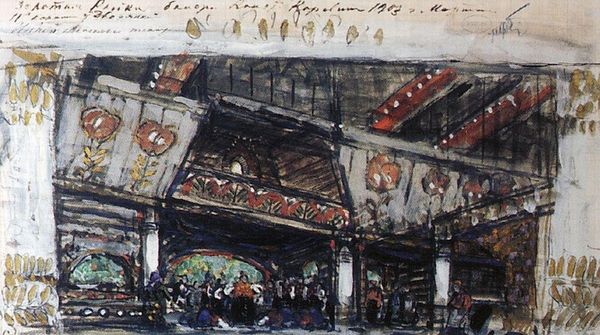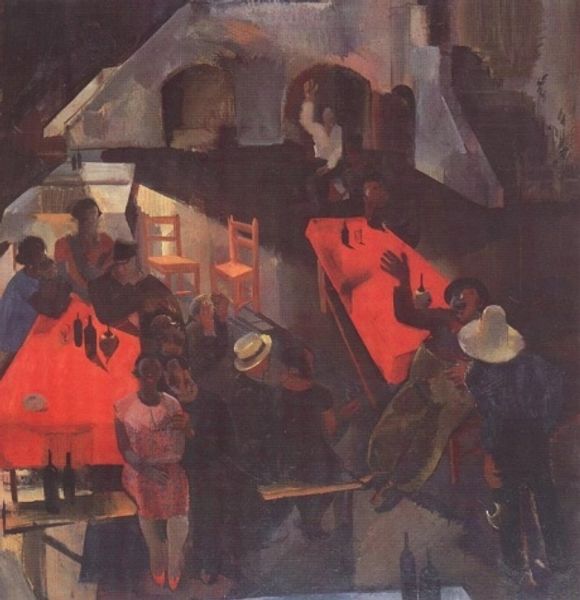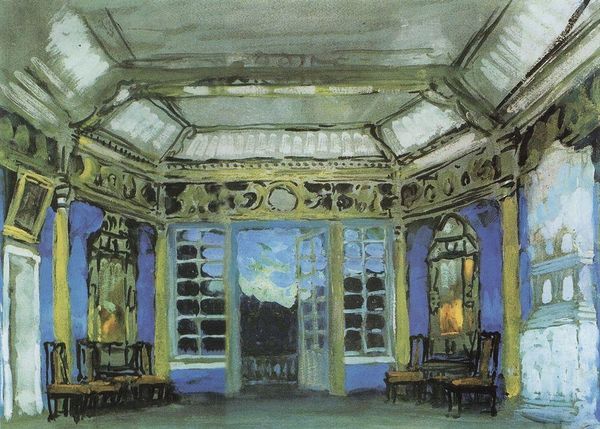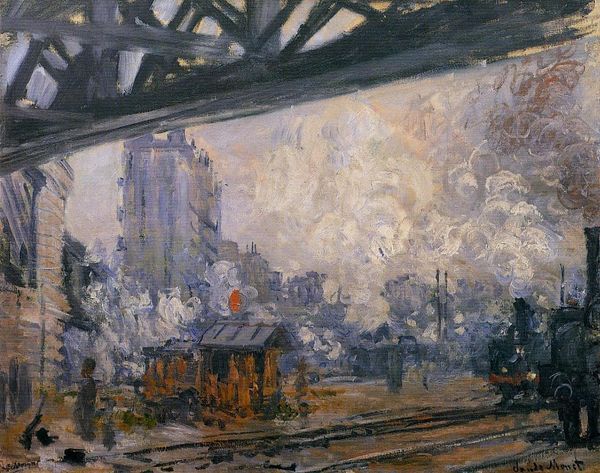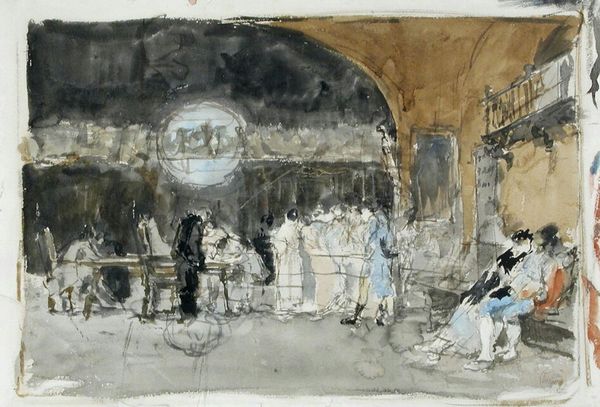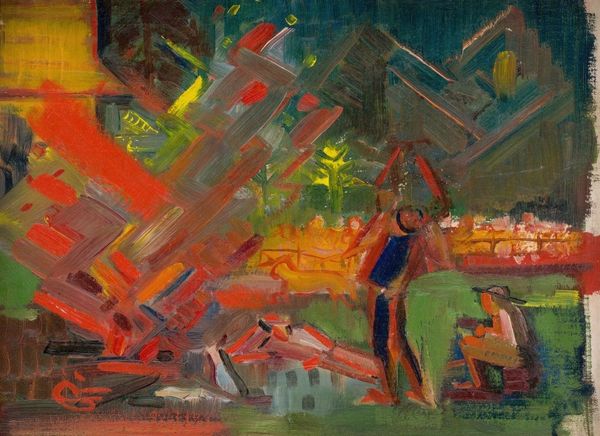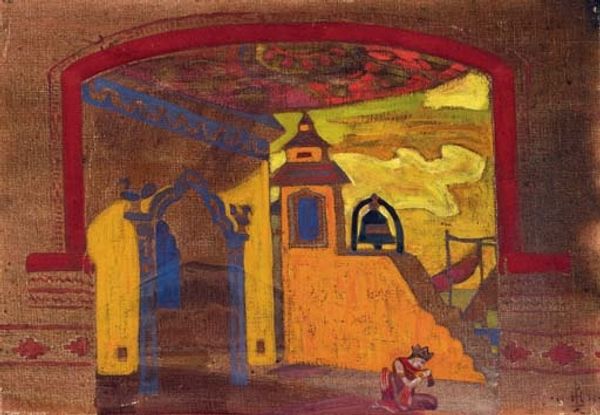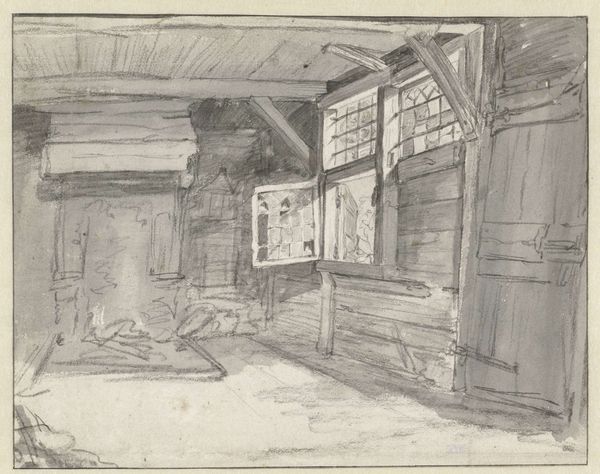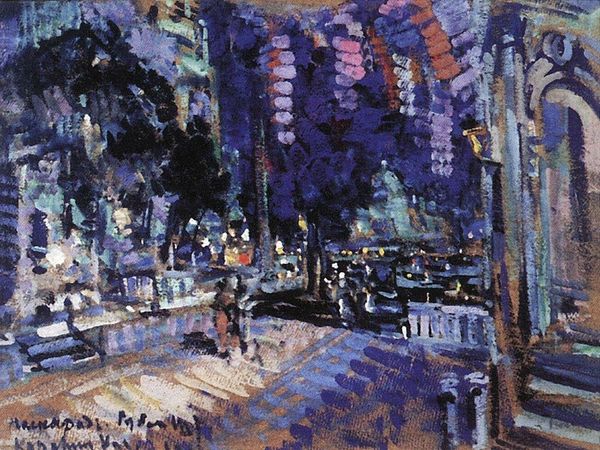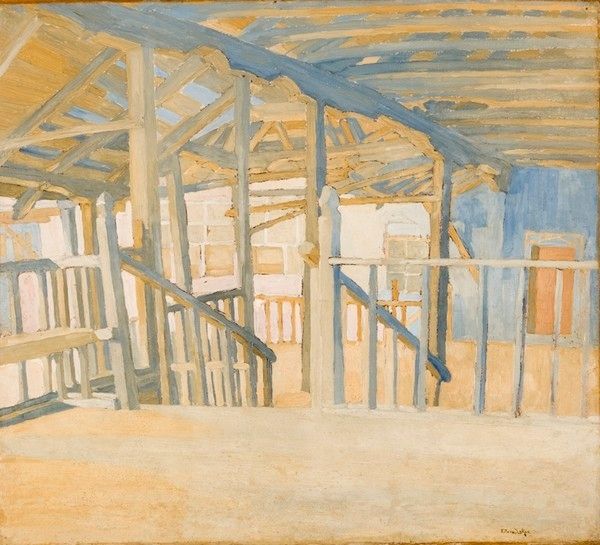
painting, oil-paint
#
painting
#
oil-paint
#
landscape
#
oil painting
#
russian-avant-garde
#
genre-painting
#
history-painting
Copyright: Public domain
Curator: This is Konstantin Korovin's "Terem Yaroslavna," an oil on canvas created in 1928, situating it within the Russian avant-garde movement. Editor: It's arresting. Stark, almost. The angles create such dramatic tension, a confined stage for whatever narrative is about to unfold. There's a melancholy hanging in the air, too. Curator: Well, Korovin was deeply involved in the theatre. This is, in fact, a set design, placing it in a long tradition of artists shaping dramatic narratives. The date is significant; by the late 1920s, the Russian avant-garde was under pressure from socialist realism. Stage design allowed artists a space for experimentation perhaps not possible in other genres. Editor: You can see the lingering influence of symbolism in that mountain backdrop viewed through those imposing arches, a sort of yearning for a lost ideal. The mountains themselves seem like emotional projections of the characters. Notice the dominance of blue for sorrow, contrasted with the flickering fires of potential hope or ruin. Curator: This depiction seems a commentary on the avant-garde artist's role—struggling to maintain aesthetic ideals within evolving socio-political structures. The scene suggests not just historical narrative, but also the role of art under a transforming society, and also considering audience’s expectation for it. Editor: Absolutely, it speaks volumes beyond a mere scene from the opera. Look at how the architectural shapes surrounding figures are bold, heavy almost oppressive shapes versus a brighter, much freely expressionist landscape at the centre background. It traps these individuals not just physically, but perhaps psychologically. They become symbolic prisoners within this carefully constructed visual field. The architectural backdrop looming large like fate itself. Curator: The institutional support that Korovin had, both before and after the revolution, shows his role as not just a visionary artist, but as a keystone in Russia's cultural projection to the world. Editor: Exactly, this composition makes us ponder the intersection between art and constraint and even identity within a landscape heavy with historic memory, Curator: That makes us really wonder the value that artist’s social role brought in shaping that national identity… Editor: And its symbolism makes you almost ache.
Comments
No comments
Be the first to comment and join the conversation on the ultimate creative platform.


